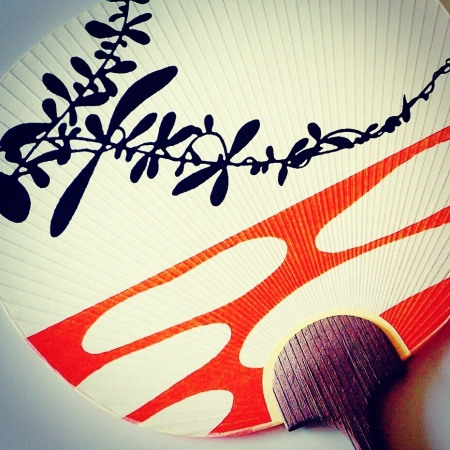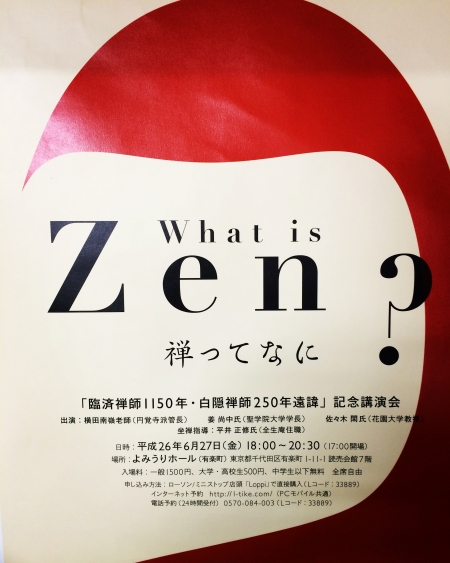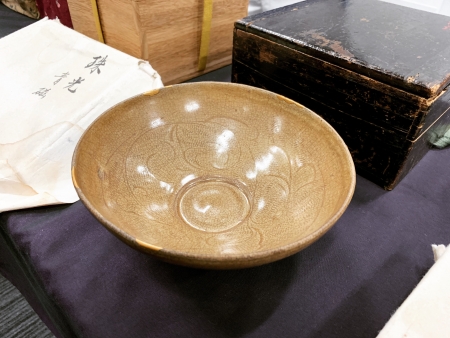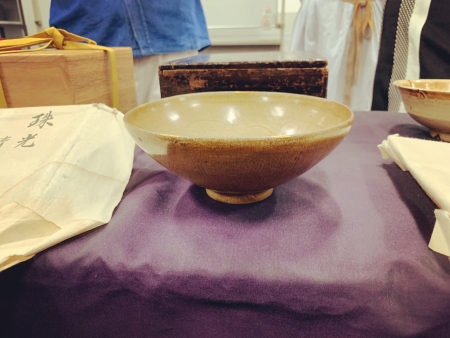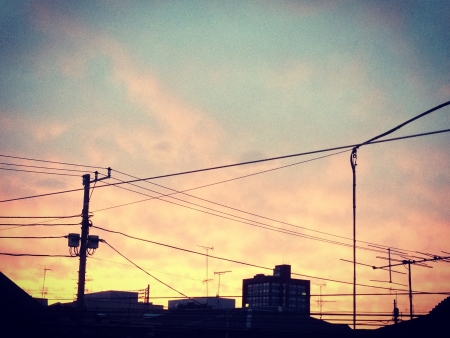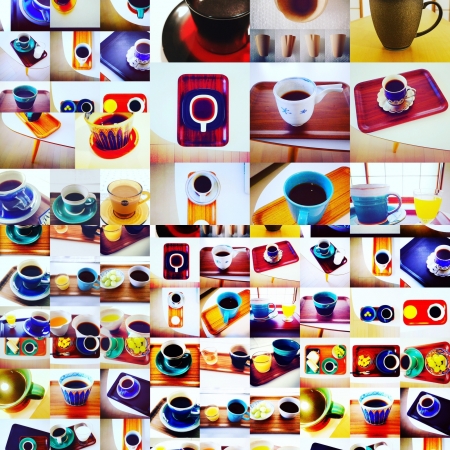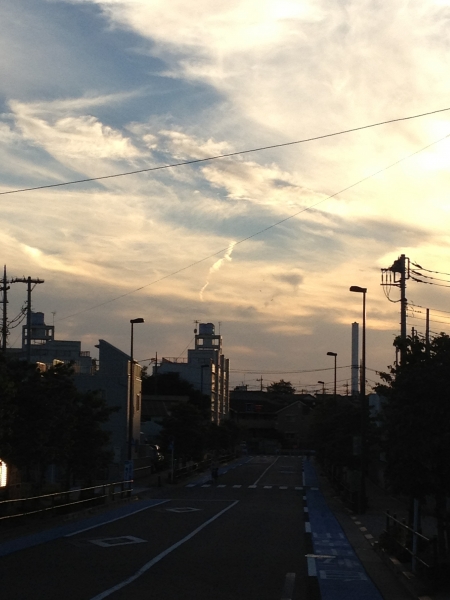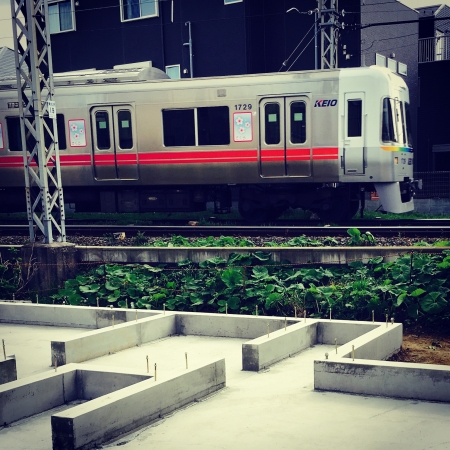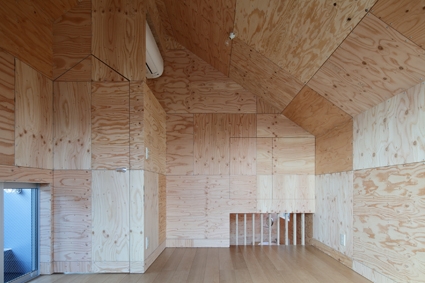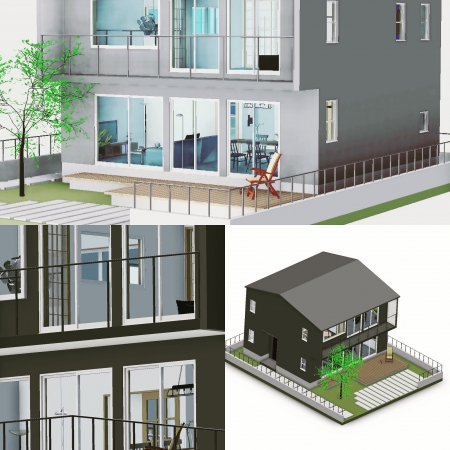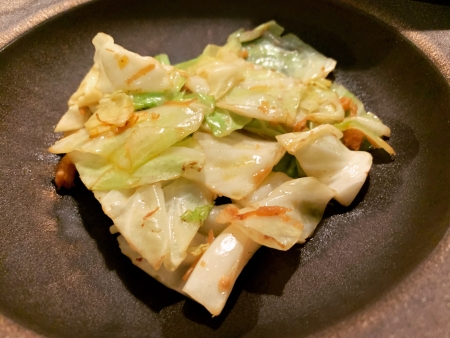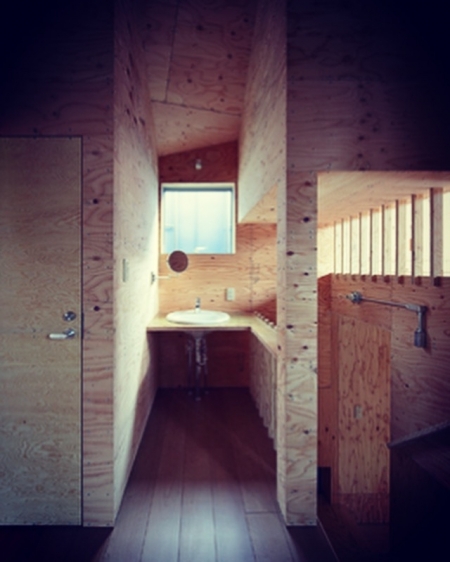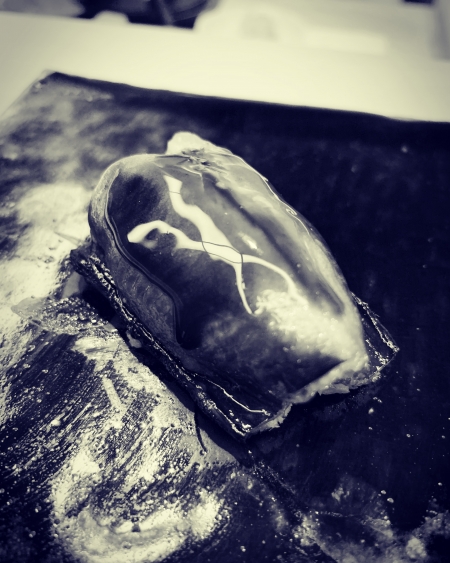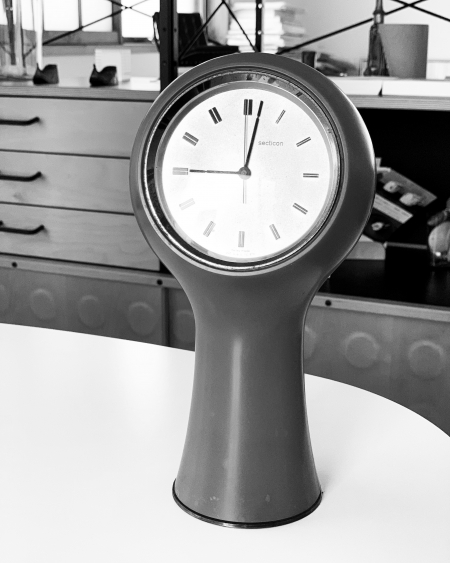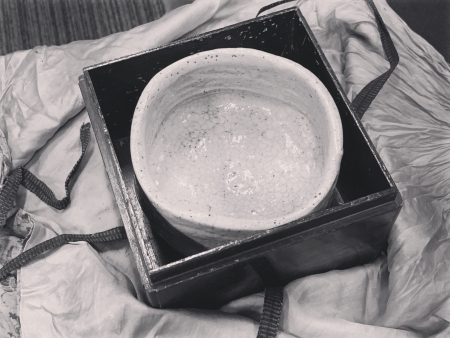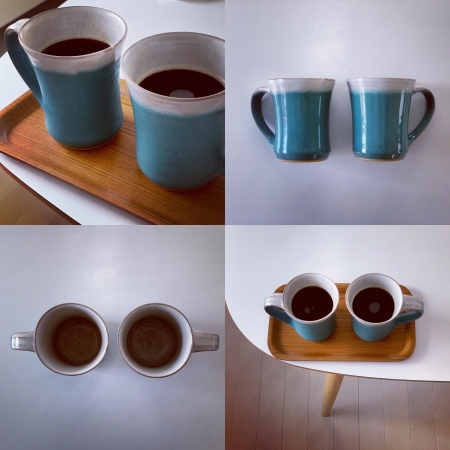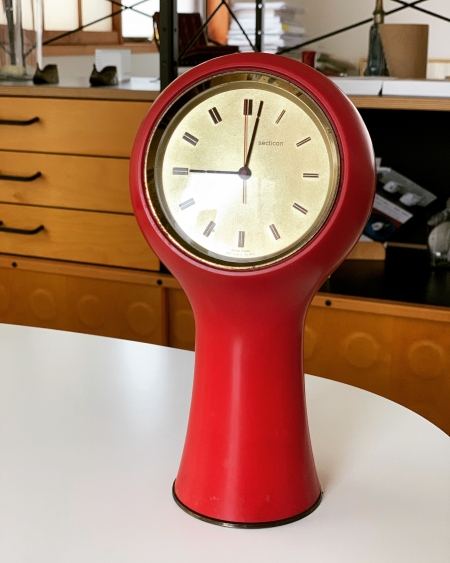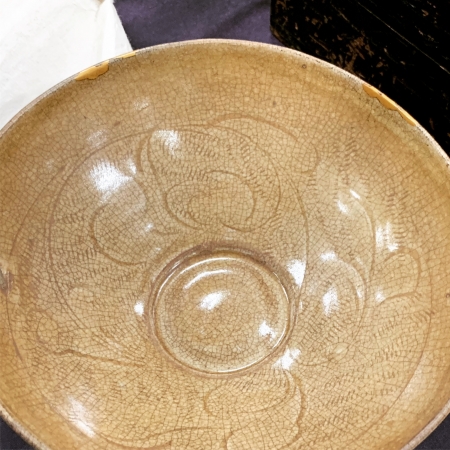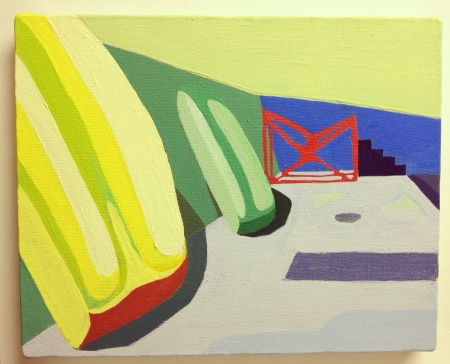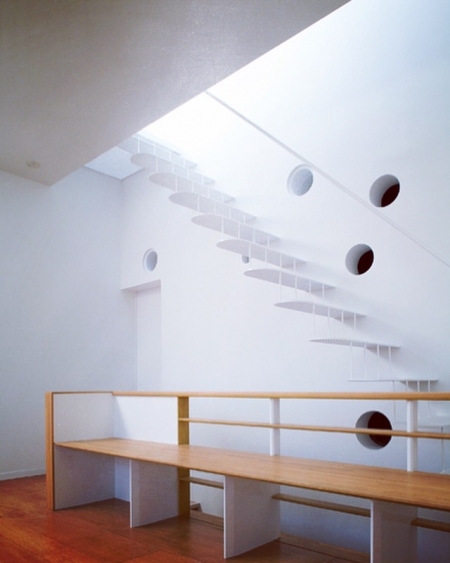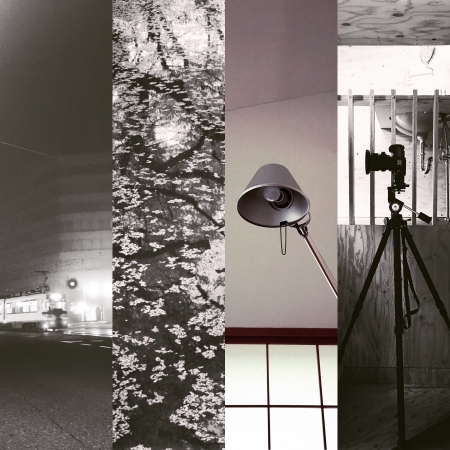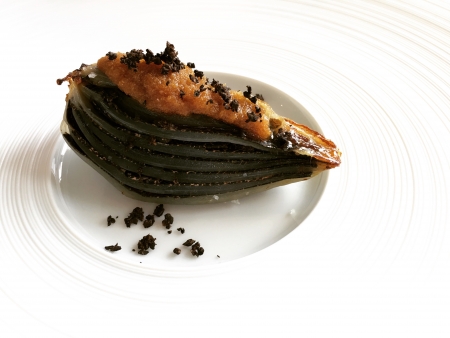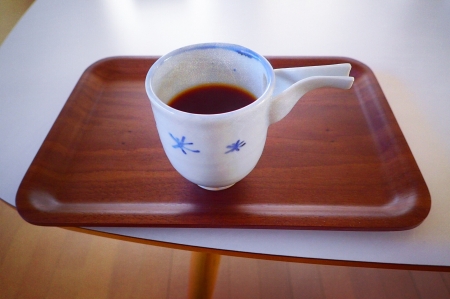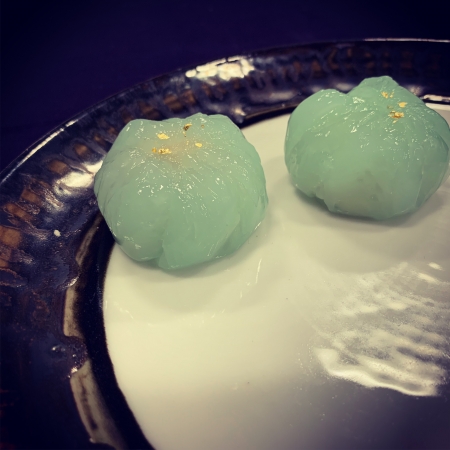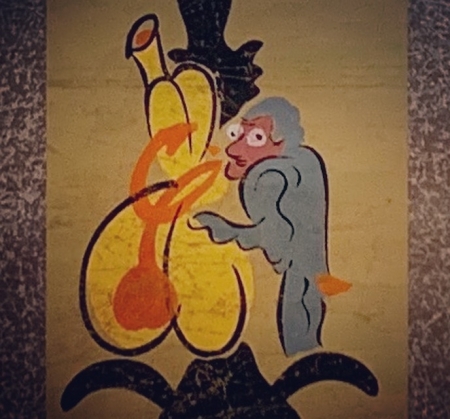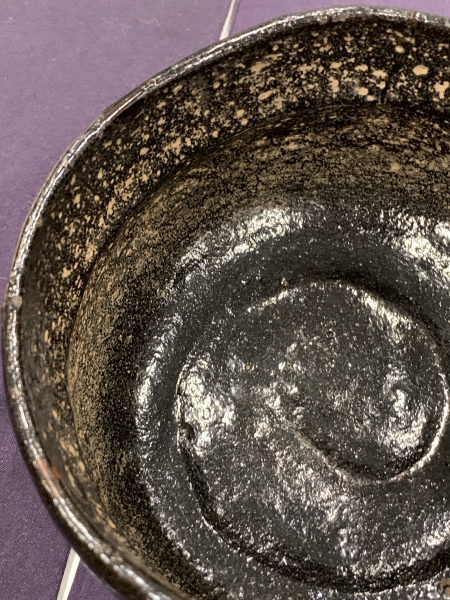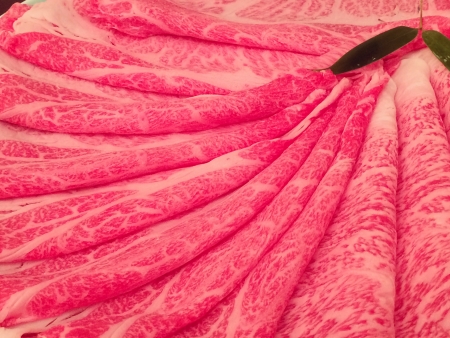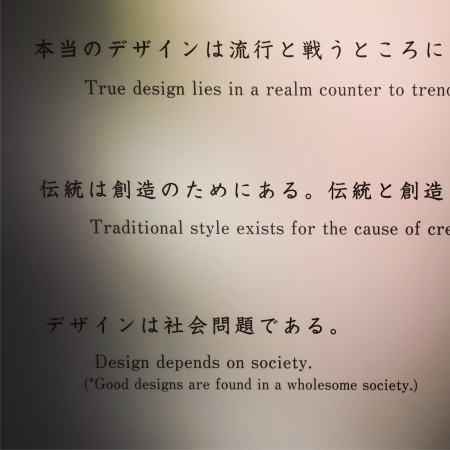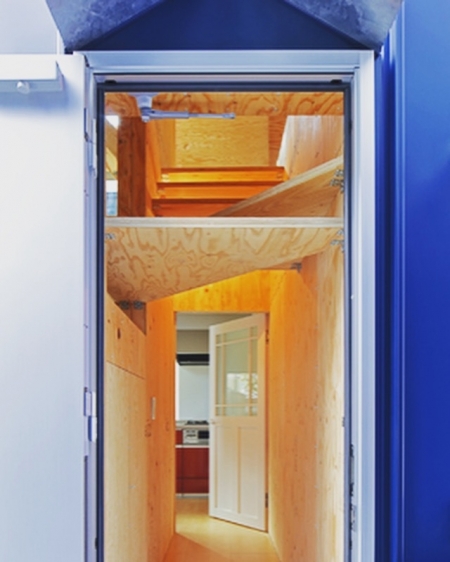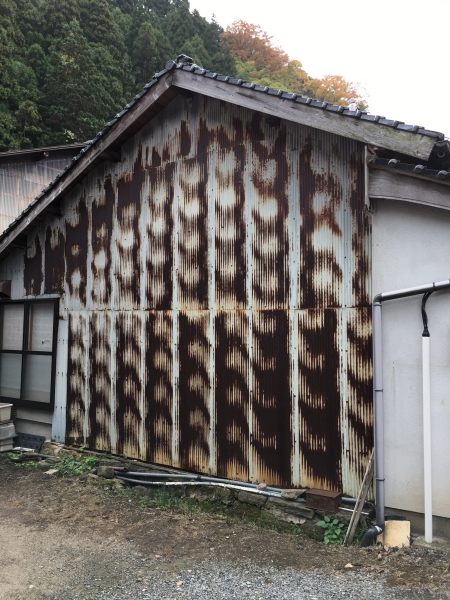ラワンベニヤを鍋ビスで留める、壁天井を全て、前に連続して住宅で使ったら、最近、ホームページの作品を見て、その仕上げをオーダーされることが多い。
基本的には、その住宅に対して考えたデザインは二度と他では使わないようにしている。それは、そのデザインにした理由が当然あり、その時にしか成り立たないことだから、他で使えば、それは単にデザインだけが独り歩きをし、何も考えていないような気がするので、その時連続して使ったのは隣り合う兄弟の家で連作だったから。
ただ、このラワンベニヤを鍋ビスで留める仕上げは気に入ってしまった。
離れて見ると、ラワンベニヤの質感が部屋全体に溢れ、その木目があまりにも多いので、見ようによっては何か別の木では無い質感に見え、また、近づくと、今度は鍋ビスの存在が急に目に飛び込んで来て、ラワンベニヤの質感にまた違ったアクセントを加え、違った見え方をする。
離れて見た時と近づいて見た時で、仕上げの見え方が違い、人の動きに呼応するように建築が表情を変えるところが良かった。
その時は、ラワンベニヤの留め方をどうするかを考えていて、よく見かけるのは接着剤とフィニッシュと呼ばれる細い釘の併用だが、それではラワンベニヤの経年の反りに対して脆弱なような気がして、留めるのにビスを使いたい、ただそれだと、ラワンベニヤの面に余計な物が見え、折角、壁天井をラワンベニヤだけで仕上げるという、統一感の良さが無くなるような気がした。
そこで、使うビスは施工性を考えて、比較的手に入りやすい物を使うが、ビスの頭の形状、色、ピッチを検討して、ラワンベニヤとビスが合わさることにより、より綺麗な仕上げに見え、離れて見た時と近づいて見た時で、仕上げの見え方が違うことを意識して、現場で何度も試作しながらデザインした。
この仕上げは、ベニヤを鍋ビスで留める、という単純な仕組みながら、その見え方の変化は複雑で、あと、竣工後、クライアントが住む中で、その鍋ビスを少し緩めフックとして使い、時計やハンガーを掛けるなど、実用にも優れたところがあり、単純な仕組みで尚且つ比較的手に入りやすい材料を使うので汎用性が高く、また他でも使うことにした。
ちなみに、住宅1棟で、1万本以上2万本近い数の鍋ビスを使い、それを全部大工さんは1本1本、インパクトと呼ばれる電動工具を使い留めていったので、そのひたすらの繰り返し作業による狂気にも似た仕上げの様は圧巻である。
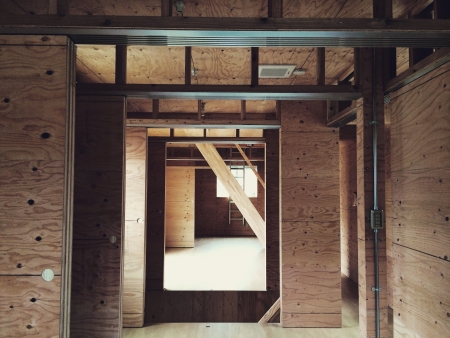
"Nabe Bis Madness"
If all the wall ceilings are used continuously in front of the house, it is often seen the work on the home page and the finish is ordered recently.
Basically, the design for the house is never used elsewhere. It is natural that the reason for the design, it is only that time, so if you use it elsewhere, it will feel like you are just thinking about design alone, and then use it continuously Because it was continuous production in the house of an adjacent brother.
However, I liked the finish which fastens this Rawan veneer with a pan screw.
Looking away, the texture of Ravan veneer fills the whole room and there are too many wood grain, so it looks like it is not a different wood depending on what you look at, and when it approaches, the presence of the pot screw suddenly becomes I dive into my eyes and add different accents to the texture of Ravan veneer to look different.
When I saw it when I was away and when I was approaching it, it was good for the architecture to change the expression so as to respond to the movement of people, the way of seeing the finish was different.
At that time, I was thinking about how to fasten the Lauan veneer, and it is common to use a combination of adhesive and a thin nail called finish, but then I feel like it is vulnerable to the warping of the Lawan veneer, and fasten. But I wanted to use a screw, just that, I saw an extra thing on the surface of Rawan veneer, and I felt that the goodness of unity would be lost, with the wall ceiling finished with only Rawan veneer.
Therefore, considering the ease of use, we will use relatively easy-to-use screws, but by examining the shape, color, and pitch of the screw head, it looks like a cleaner finish by combining Lawan veneer and the screw. When I saw it when I looked away, I realized that the appearance of the finish was different, and I designed it while making a trial on the site many times.
This finish is a simple mechanism to fix the veneer with a pan screw, but the change in appearance is complicated, and after the completion, the client lives in a house, and the pan screw is used as a loose hook, watch or hanger There are places that are good for practical use, such as putting in place, and because they use materials that are simple and yet relatively easy to obtain, they have high versatility and are also used elsewhere.
By the way, in one house, more than 10,000 pot screws are used as many as 10,000 or more, and all the carpenters used it one by one, electric tools called impact, so that repeated repetition The finish similar to the madness by work is a masterpiece.

